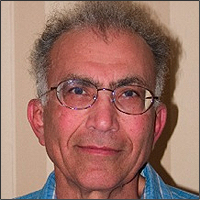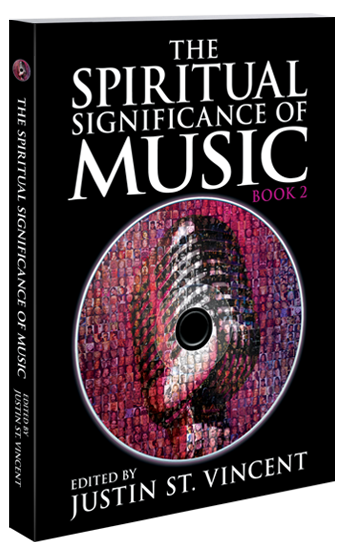Moustafa Gadalla
// Author & EgyptologistMOUSTAFA GADALLA is an author, independent Egyptologist, and Chairman of the Tehuti Research Foundation based in Greensboro, North Carolina. His books “Tut-Ankh-Amen: Living Image Of The Lord” (1997), and “Egypt: A Practical Guide” (1998) are both available from Bastet Publishing, “Exiled Egyptians: The Heart Of Africa” (1999), “Historical Deception: The Untold Story Of Ancient Egypt” (1999), “Egyptian Harmony: The Visual Music” (2000), “Pyramid Handbook” (2000), “Egyptian Cosmology: The Animated Universe” (2001), “Egyptian Divinities: The All Who Are THE ONE” (2001), “Egyptian Rhythm: The Heavenly Melodies” (2002), “Egyptian Mystics: Seekers Of The Way” (2003), “The Ancient Egyptian Culture Revealed” (2007), and “The Ancient Egyptian Roots Of Christianity” (2007) are all available from the Tehuti Research Foundation.
Website: www.egypt-tehuti.org
Photo: Jason Just, Tehuti Research Foundation
Interview:
The creation of the universe was caused by the Big Bang: a sound phenomenon, one that the Ancient Egyptians believed was an orderly event maintained by an order of balance and equilibrium. It was Osiris, the All-Spirit of the cosmos that symbolized this animation of the outwardly expanding universe, constantly creating harmonic sounds. This maintenance of harmony in the universe requires that the world in whole and in parts, are all in tune. Sound that man creates in music, singing, or dancing, can either strengthen or imperil the equilibrium of the world. As such, the correctness of sound generation, was, for the Ancient Egyptians, and is to the Baladi Egyptians, the present day silent majority of Egypt, essential to the harmony of the cosmos, as well as for the welfare of the individual and the society. For the Egyptians, music, singing, and dancing were performed and selected according to a well thought out selection of melodies that are appropriate for different occasions with Egypt as the ideal model for such rules. In Ancient Egypt, the proper coordination of sound production in words, song, music, and dances, between earth and the heavens, is clearly acknowledged and appreciated in Plato’s collected dialogues, as in Laws VII [798e–799b]:
ATHENIAN: Every means, then, shall we say, must be employed to keep our children from the desire to reproduce different models in dance or song, as well as to prevent a possible tempter from offering them the inducement of a variety of delights? CLINIAS: Perfectly true. ATHENIAN: Well, can any of us find a better device for this purpose than that employed in Egypt? CLINIAS: And what is that? ATHENIAN: Why, the plan is to consecrate all our dances and all our tunes. First, the festivals must be fixed by compiling an annual calendar to show what feasts are to be celebrated, at what dates, and in honor of what deities, sons of deities, or spirits, respectively.
Sound related activities are the means to communicate with the supernatural forces of the universe. The vocals of priests and the musical orchestras are sounding bridges between the macrocosmos, between the world of the neteru (gods) and ancestors, and the microcosmos, the world of the earthly living. In Ancient Egypt, temples were commonly provided through the chanting of priests and a complement of male and female musicians, singers, and dancers, all of whose task it was to participate in the various daily and seasonal cycles of rituals, so as to attune to the universal harmony. Present-day Egyptians are like their ancestors, as Ancient Egyptian texts show that Egyptians spoke and sang in musical patterns on all occasions and for all purposes, from the most sacred to the most mundane. They love to sing about anything and everything. There is nothing that is too insignificant or too large to sing a song to or about. To stay in harmony with nature, the Ancient Egyptians utilized music and dance in all aspects of the personal earthly voyage, from the cradle to the grave. All various occasions had their appropriate songs, initiation ceremonies, medical and holistic treatments, lamentations to the deceased, hymns, litanies and entertainment songs of philosophical content, love songs, festive songs during the Nile floods, the Egyptian New Year celebration, sung and recited prayers or spells in honor of the neteru (gods), songs to welcome the morning sun, and many more.
“The Ancient Egyptians utilized music and dance in all aspects of the personal earthly voyage, from the cradle to the grave.”
– Moustafa Gadalla, author of “Egyptian Rhythm: The Heavenly Melodies”


